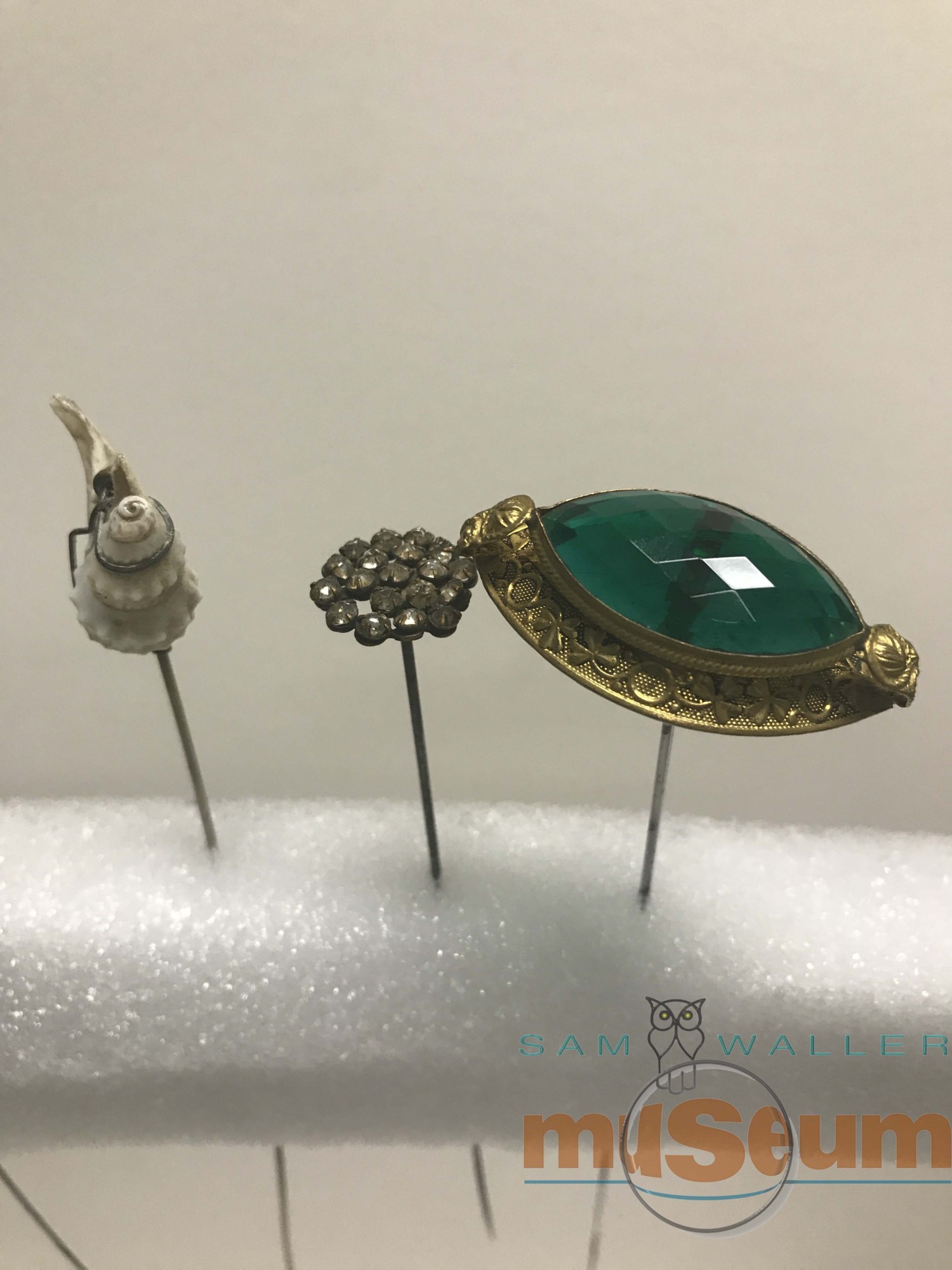Hat pins have been used since the early 1400’s but enjoyed renewed popularity starting in the 1890’s. Fashion at that time demanded ornate up-do’s and large, extravagant hats which were pinned to their owner’s hair using hat pins. Women soon found a secondary function to the trusty hat pin- as a weapon for self defence. Thus, begun a public menace that lasted until the 1920’s!
Women in the late 1890’s and early 1900’s enjoyed a level of freedom rarely seen before in society. Due to the Industrial Revolution, many women began working away from home and went about in public spaces unchaperoned by a familial escort for the first time. With this newfound freedom came an increase in harassment from unsavoury men. The hatpin became a woman’s weapon of choice for discouraging harassment because it was easily concealable and one good jab was usually all it took to deter unwanted attention.
Hatpins came in a dizzying array of lengths, colours, and designs and were often used as status symbols. It was thought that the more ornate a pin was, the wealthier its owner was. They were made in a variety of materials such as brass, gold, wood, and even ivory. Pin tops commonly had faux jewels inset or meaningful design. Some pin tops moved when jostled, and others had secret compartments for makeup compacts. Hatpins came in a variety of lengths and could be over 13 inches long. The ones at the Sam Waller Museum are made from faux jewels but are designed to look like expensive rare gems.
By the 1910’s hat pins were declared a national and international threat. Numerous countries including the USA and England imposed laws restricting hatpins over 9 inches in length. This was met with considerable resistance, especially from the suffragists and working-class women. They decried the measures citing a worry for women’s safety if they were unable to defend themselves. Despite the public outcry, the reign of the hat pin was to end soon. During WWI, hatpins became viewed as an extravagance and the materials used to make hatpins were redirected for the war effort. By the end of the war fashion had changed again to favour shorter hair and smaller hats, thus rendering hatpins obsolete.


